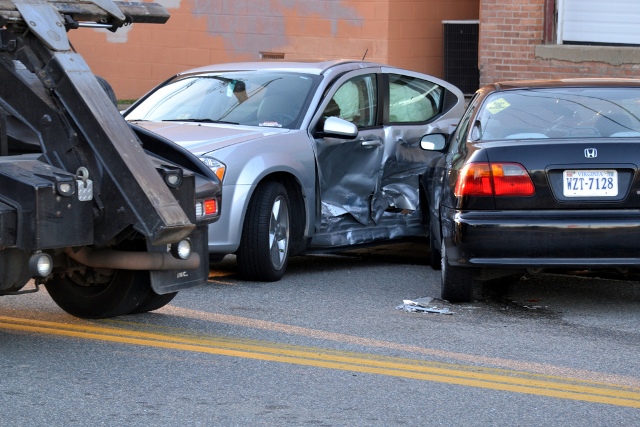Getting in an auto accident will inevitably ruin your day regardless of who was at fault. Whether it’s the accompanying physical pain, impact on your insurance/driving record, suddenness of being without a vehicle, interruption of your busy day, or a combination of them all, it’s going to have a negative impact on your life.
Of course when you are found to be at fault, the worries are compounded, and it is a natural reaction to be uneasy during the claims process. These worries compound further when the accident occurs while you’re operating a company vehicle.
Many of us, regardless of industry drive a company owned and insured vehicle on a day to day basis and with that comes and added responsibility of maintaining a safe and near spotless driving record inside the company car. As we all know, accidents do happen, and when they occur in a company car on top of the troubles listed above, your job may be at stake.
Each company and accident are different, but several of the steps listed below can be applied universally if you find yourself in the unenviable position of a collision.
Get Police on the Scene Immediately!
Obviously there is one step that comes before calling the police, and that is, of course, to assess your personal well being and the well being of anyone else involved. Then, quickly get a phone and dial 911 to have law enforcement and medical personnel get to the scene of the accident. This will help in getting an accurate police report and ensure that everyone is okay.
The officer will likely hand you a card with a case number, the reporting police precinct, and the name of the officer on the scene. Hold on to this card as it is very important in beginning the claims process and retrieving the report when it becomes available.
Call your Supervisor and Gather Details
Once confirming police are on the way, your company undoubtedly will require you to notify your supervisor immediately. You should jot down any details of the incident which will be useful when you need to recount to incident later on. An accident is a traumatic experience that can be difficult to deal with, and details can become fuzzy if not recorded as fast as possible.
If you have the ability to take pictures, now may be a good time to take several of the damage to the company owned car, any other damaged property, and the road conditions. Make sure these pictures have a date and time stamp to aid the claims process. It is not recommended to discuss the accident with the other party and instead only discuss the matter with the police, your company, and a lawyer. DO NOT ADMIT FAULT to anyone!
Filing an Internal Report with your Company
After you’re away from the scene and back in the office, your company will need you to fill out a document recounting the accident. This report should include the case number you were given at the scene, the names of other persons or property involved and an accurate account of the crime. It is important to be as honest and forthright as possible and give as much detail as possible.
Even if you are found at fault, it doesn’t necessarily mean termination. However, remember that the truth will come out in the report and any false statements made on your part are likely to be a fireable offense.
Submit to a Drug and Alcohol Screening
After filling out the report, nearly all companies will require you to submit to a drug and alcohol screening as mandated by their insurance. For many of us, we have likely never submitted to such tests and even if you know there is no possible way anything could show up positive we tend to worry. It is important to relax and remember you likely have nothing to worry about.
That is unless you know you have a lot to worry about in which case your problems extend far beyond just the loss of your job. Upon completion of the tests, you may be given a patient copy of the results. It is a good idea to hold on to documents for your personal records.
There is no way to know if today is the day that an accident will rear it’s ugly face and being in a company owned vehicle only complicates the situation further. Following the steps above, however, can help the process move along more smoothly and better prepare you should you find yourself in this situation. Who knows, it could be the difference between continued employment or a difficult separation.
This article was brought to you by Brian Levesque. Brian has had years of experience as a professional driver in a series of industries. Now he is a content creator for Driver Physicals. To learn more about Brian and see his other work, check out his Google+.



